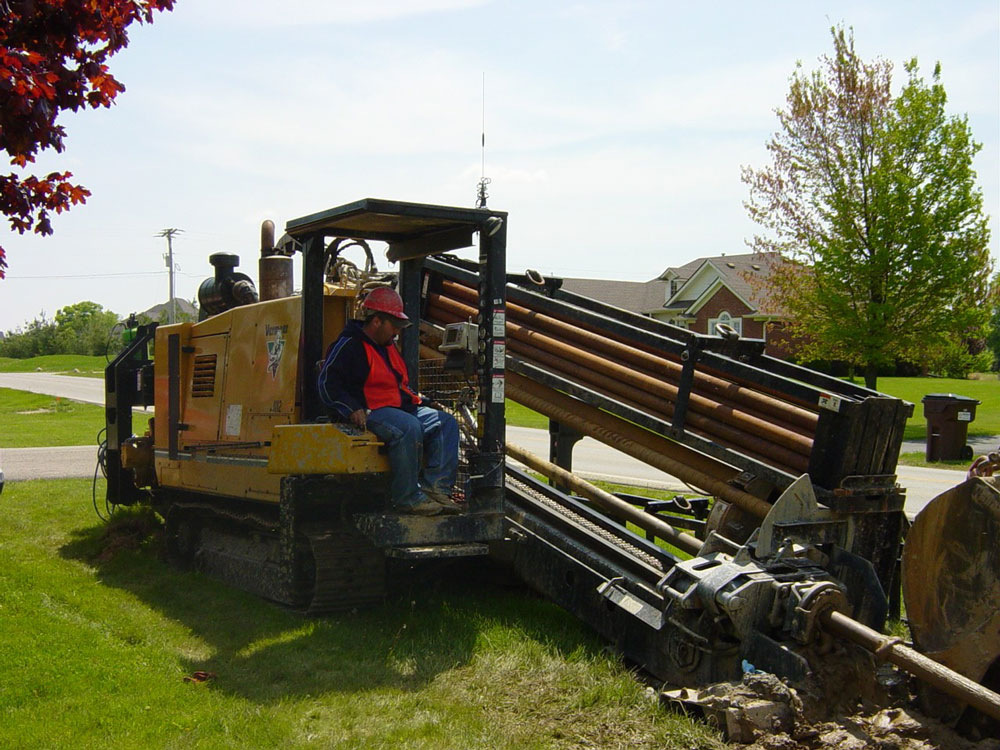HDD, also known as Horizontal Directional Drilling, is now a vital technique in contemporary construction and utility installation. With the ongoing growth of urban areas and infrastructure requirements increase, contractors face particular challenges in managing projects effectively and with limited disruption. Understanding HDD not just empowers contractors to tackle these challenges but also improves their capacity to deliver superior results to clients.
In this article, we will discuss the fundamentals of Horizontal Directional Drilling and its many advantages over classic trenching methods. Including environmental advantages and its significance in utility infrastructure development, HDD is leading the charge for more innovative and eco-friendly construction practices. If you are involved in telecommunications, water lines, or renewable energy projects, gathering insight into HDD can change how you approach planning and execution in your upcoming ventures. Let's dive into why each contractor should become acquainted with this critical technique. # Comprehending Lateral Guided Excavation

Sideways Guided Boring, commonly referred to as horizontal directional drilling, is a no-dig construction method utilized to place underground utilities while ensuring minimal surface disruption. The approach involves three main phases: boring, enlarging, and product installation. Initially, a test hole is drilled along a set path utilizing a customized drill, that can maneuver around obstacles and alter angles. This process allows for the exact placement of conduits and pipelines underground, enabling various applications in metropolitan and country settings.
One of the key components of horizontal directional drilling is the use of a excavation fluid, which not only cools the drilling tool and additionally helps to secure the borehole and move cuttings to the surface. Horizontal Directional Drilling Ashbourne Ireland reduces the chance of soil disturbance and safeguards the integrity of the surrounding environment. Moreover, HDD can be adjusted to multiple soil types and conditions, making it a flexible solution for many projects. It can even accommodate complex terrains such as hilly or rocky landscapes where classic trenching methods would be impractical or too disruptive.
The demand of HDD continues to grow as industries acknowledge its numerous advantages. By decreasing the necessity for extensive excavation, this method decreases the time and cost associated with utility setup and maintenance. Additionally, it lessens the environmental impact by maintaining natural landscapes and lessening damage to existing infrastructure. As the need for efficient construction methods increases, understanding the principles and applications of horizontal directional drilling becomes ever more essential for builders across multiple sectors.
Benefits and Uses of Horizontal Directional Drilling
Horizontal Directional Drilling offers many advantages that make it a popular method for subsurface utility installation. One of the primary benefits is its capacity to reduce surface disruption. In contrast to traditional trenching methods, HDD allows contractors to install pipelines, cables, and other utilities without the need for extensive excavation, preserving the condition of roadways, landscapes, and existing structures. This not only speeds up project timelines but also lowers the need for significant restoration efforts after installation.
The flexibility of HDD extends to a wide range of applications across various sectors. Contractors utilize this technique for deploying water and sewer lines, telecommunications cables, and fiber optic networks. Its ability to move through complex terrains, including urban settings and sensitive environmental areas, makes it an essential tool for modern infrastructure projects. HDD is especially efficient in challenging scenarios, like river crossings or dense urban environments, where traditional methods would be invasive or impractical.
As the demand for sustainable construction methods grows, HDD also is prominent for its environmental benefits. The technique significantly reduces land disturbance and restricts the impact on surrounding ecosystems. Moreover, as laws and community expectations shift towards more efficient methods of construction, HDD is poised to play a crucial role in shaping the future of utility installation. With continued progress and increased implementation, HDD represents a cutting-edge solution for businesses aiming to improve both efficiency and environmental stewardship in their projects.
Future Trends in HDD Technology
With the need for efficient utility projects keeps to rise, this outlook of Horizontal Directional Drilling tech is appearing more favorable. Advancements in equipment and instruments are expected to enhance the precision and efficiency of drilling operations. Recent innovations such as dual-frequency sonar systems and advanced tracking software are being integrated into horizontal drilling processes, enabling operators to traverse complex terrains with greater precision. Additionally, as older systems deteriorates, the need for restoration and replacement will propel further adoption of horizontal directional drilling methods, especially in urban areas in which conventional excavation could cause substantial disruptions.
Eco-friendliness is also taking center stage in the evolution of HDD systems. The ecological benefits of trenchless methods over conventional digging are gaining recognition more widely, prompting advancements in eco-friendly drilling fluids and reduced sound operations. As project managers and local governments become increasingly environmental-conscious, the horizontal drilling industry is expected to see a greater focus on eco-friendly practices and materials. This transition will not only reduce site disruptions but will simultaneously help in adhering to tighter eco-regulations and community expectations.
In addition, the integration of intelligent technology into horizontal directional drilling operations is set to revolutionize task management and execution. The use of live data analysis, GPS tracking, and automated systems will improve the decision-making processes throughout the task lifecycle. These technological advancements will also streamline operations but will further lead to significant cost savings, accelerated timelines, and improved safety protocols. As the industry gears up for future obstacles, embracing these innovative technologies will be crucial for companies looking to stay relevant in the evolving HDD landscape.
